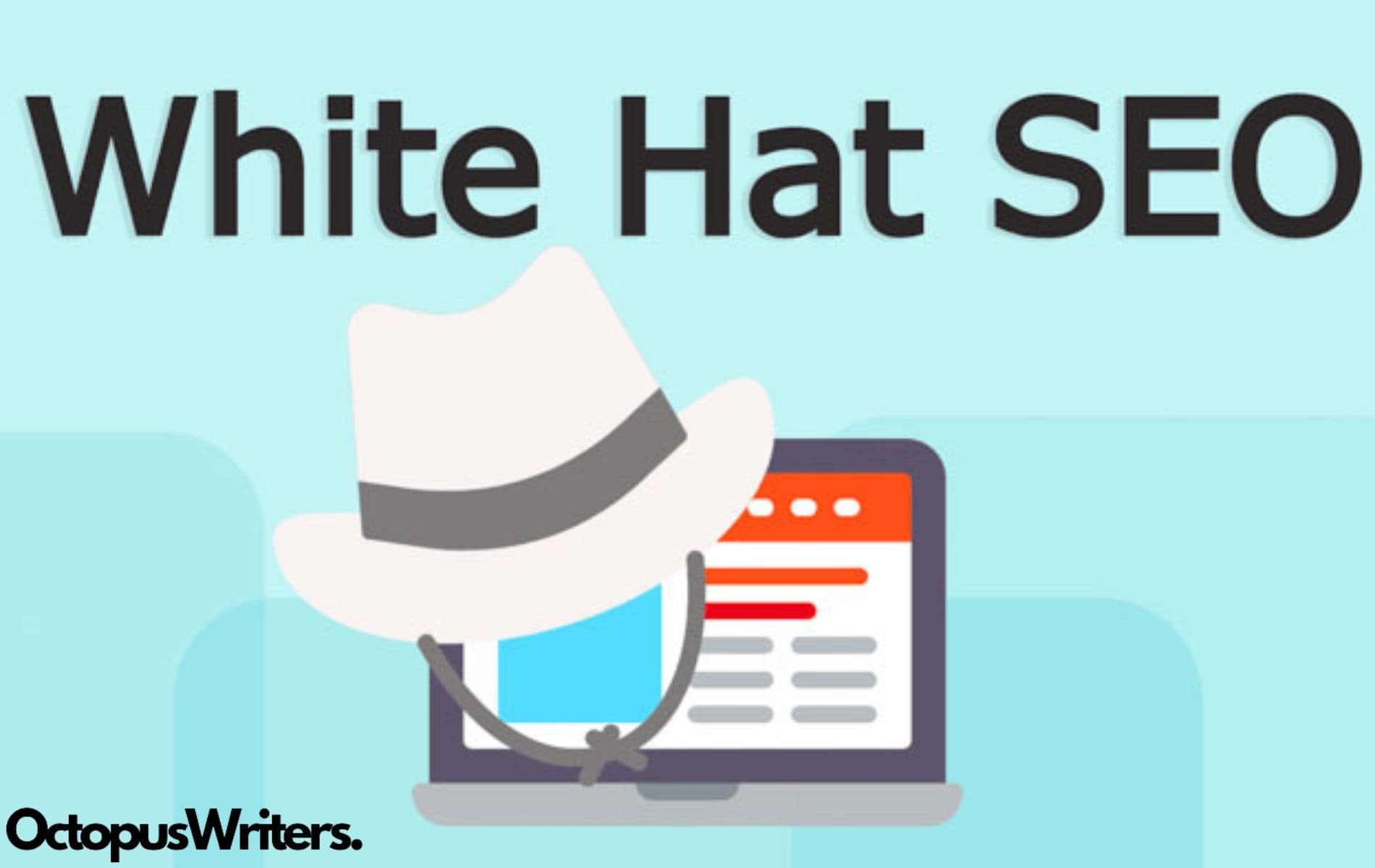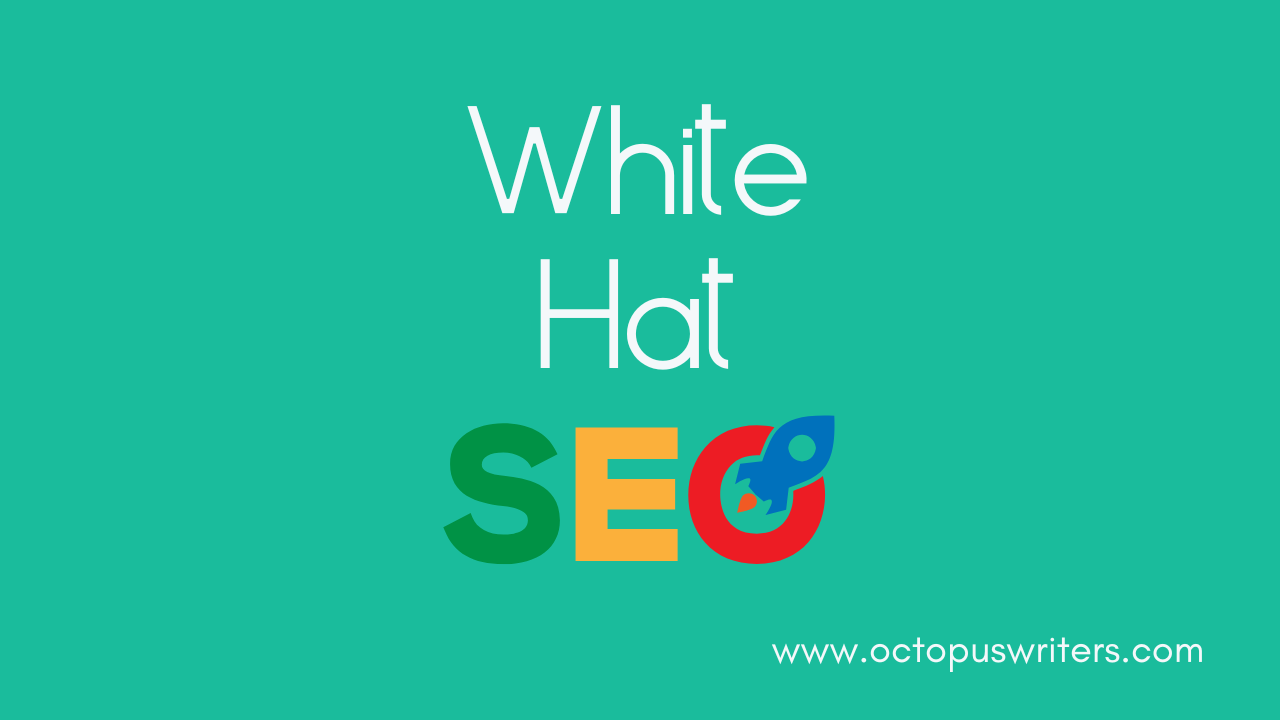White Hat SEO encompasses ethical techniques that enhance user experience while adhering to search engine guidelines. By focusing on strategies that prioritize quality content and legitimate link-building, businesses can significantly boost their visibility and establish credibility in a competitive digital landscape. This commitment to ethical practices not only fosters trust among users but also leads to sustainable, long-term results. OctopusWriters offers valuable insights and resources for navigating the complexities of SEO effectively.
What Is White Hat SEO?
White Hat SEO refers to a set of ethical practices designed to improve your website’s ranking on search engine results pages (SERPs) by following the guidelines established by major search engines like Google. Unlike black hat SEO, which relies on manipulative techniques that violate search engine policies, white hat SEO focuses on building long-term success through quality and transparency.
The core of white hat SEO lies in providing genuine value to users. This involves creating high-quality, informative content that addresses the needs of your target audience, optimizing your site for faster loading times, and ensuring mobile compatibility. White hat SEO also emphasizes using relevant, keyword-rich meta tags to enhance your content’s visibility and making your website easy to navigate so that both users and search engines can explore it effortlessly.
By adhering to search engine guidelines, white hat SEO helps maintain the integrity of your website and builds a sustainable digital presence. Instead of using shortcuts like buying backlinks or hiding content to deceive search engines, these ethical SEO practices contribute to positive user experience and help your website grow in a trustworthy manner. Ultimately, white hat SEO not only boosts your search rankings but also helps foster credibility and trust with your audience.

What Is White Hat SEO?
Why is white hat SEO important?
White hat SEO helps build a long-term brand
Following ethical practices may not offer immediate rewards, but it avoids the severe consequences associated with violating search engine guidelines. Using black hat SEO tactics may provide short-term gains, but it always carries the risk of being penalized by search engines like Google. If Google detects unethical practices, it can result in penalties that dramatically decrease your website’s traffic and visibility.
If your goal is to establish a long-term brand and generate consistent, sustainable traffic, white hat SEO is the best approach. It builds a solid foundation for your online presence, ensuring that your efforts contribute to your website’s long-term success rather than risking its reputation and rankings.
White hat SEO is more cost effective to implement
While black hat SEO tactics may seem tempting for quick results, they often involve significant costs, such as building private blog networks (PBNs) or buying backlinks. These tactics are not only expensive but also risky, as they may result in penalties from search engines. Instead of investing time and money into questionable practices, focusing on white hat SEO ensures that your efforts contribute to long-term, organic growth. Ethical SEO practices, like creating valuable content and optimizing user experience, are more sustainable and cost-effective in the long run.
White hat SEO makes everyone’s life better
As an SEO professional, you are also a search engine user. When websites follow white hat SEO practices, they contribute to a better online experience for everyone. High-quality content, fast-loading pages, and relevant information improve the overall browsing experience, ensuring that users find what they are looking for quickly and efficiently. By using white hat SEO, you not only improve your website’s rankings but also contribute to a healthier and more useful internet ecosystem, benefiting both users and businesses alike.
Benefits of White Hat SEO
White Hat SEO Provides Lasting Rankings
White hat SEO focuses on organic, sustainable growth. When your website achieves a high ranking using these ethical methods, it becomes more resilient to changes in search engine algorithms. This is because white hat strategies align with search engine guidelines, minimizing the risk of sudden ranking drops during updates.
Google rewards websites that follow its rules by maintaining their rankings over time. Unlike black hat tactics, which may offer quick wins but risk penalties and loss of visibility, white hat SEO ensures long-term reliability and stability for your site’s performance in search results.
White Hat SEO Builds Trust and Authority
Websites that use white hat SEO techniques build trust and credibility with both Google and users. By following ethical practices, your website gradually earns authority in your specific industry or niche. This trust helps your site rank better for relevant keywords, making it easier for users to find and engage with your content. The more credible your site becomes, the more likely people are to trust your brand and return to your website. Over time, this authority enhances your overall online presence, further improving search rankings and user engagement.
White Hat SEO Saves Time and Money
Investing in white hat SEO is a time-efficient and cost-effective approach. The strategies you implement today, like creating quality content and optimizing your site, can have lasting benefits, with minimal updates needed in the future. This contrasts with black hat techniques, which may require constant fixes and could lead to penalties. Rather than facing short-term gains and long-term risks, white hat SEO provides steady growth. This saves time and money in the long run, as you won’t need to worry about sudden penalties or dramatic traffic drops.
White Hat SEO Is Simple
White hat SEO is accessible to all website owners, as it focuses on straightforward, on-page optimization techniques. These techniques such as improving site speed, crafting quality content, and using proper meta tags don’t require specialized knowledge or tools. This simplicity makes it a practical and effective method for improving site rankings and boosting traffic.
By sticking to proven techniques, white hat SEO allows you to focus on creating valuable content and enhancing user experience, without the complexity of more aggressive tactics.
White Hat SEO Is Legal
One of the key benefits of white hat SEO is that it fully complies with search engine guidelines. Since it doesn’t involve exploiting loopholes or breaking any rules, your website remains safe from penalties or legal issues. This legality ensures that your SEO efforts are sustainable and won’t jeopardize your site’s standing. In contrast, black hat methods often involve unethical or illegal practices that can result in severe consequences if detected. White hat SEO keeps your site within legal boundaries, providing a secure path to online growth.
White Hat SEO Techniques

Perform Keyword Research
To effectively reach your target audience, it’s essential to identify the words and phrases they use when searching for information related to your products or services. Start by using a reliable keyword research tool to explore keywords relevant to your niche. Investigate search volume, competition, and keyword difficulty to find the best opportunities. Once you’ve identified high-value keywords, ensure your content is built around these terms, aligning it with what your audience is actively searching for. This strategy not only improves your visibility but also ensures your SEO practices comply with search engine guidelines, resulting in sustainable growth.
Create Valuable And People-Centric Content
Google emphasizes content that is helpful, reliable, and centered on user needs. To craft content that resonates with your audience:
- Understand Search Intent: Determine the purpose behind users’ search queries by examining the content type and format that rank highly for those terms. This allows you to align your content with user expectations and fulfill their needs.
- Comprehensive Coverage: Study the top-ranking pages for your target keywords to identify key subtopics, and ensure your content thoroughly covers the subject matter. This comprehensive approach helps your content stand out as a valuable resource.
- Unique and Original Content: Offer fresh insights, original research, or a unique perspective that adds value beyond what’s already available. Original content not only engages your audience but also signals to Google that your website is a valuable source of information.
- Expertise and Trustworthiness (E-A-T): Showcase your knowledge by providing content authored by experts in your field. Highlight your credibility and maintain accuracy in all information presented, as Google values websites that demonstrate expertise, authoritativeness, and trustworthiness.
- Readability: Use short paragraphs, simple language, bullet points, and multimedia elements like images or videos to make your content more digestible. This approach improves user engagement and helps keep readers on your site longer.
Pay Attention to On-Page SEO
Optimizing on-page elements is essential to making your content both search-engine and user-friendly. Focus on including relevant keywords in strategic places, such as:
- Titles: Your title should include your primary keyword to signal the topic to search engines and readers.
- Headings and Subheadings: Organize your content with H1, H2, and H3 tags that clearly communicate the structure of the article. These tags also offer another opportunity to include secondary keywords naturally.
- Alt Text for Images: Provide keyword-optimized descriptions for images to improve your content’s accessibility and boost image search rankings.
Provide a Good User Experience
A great user experience is crucial for SEO success. Search engines increasingly prioritize websites that offer smooth and fast experiences to users. To achieve this:
- Use HTTPS: Ensure your website uses HTTPS to provide secure browsing and build trust with your users.
- Optimize for Mobile: With the majority of searches now happening on mobile devices, your site should be fully responsive and mobile-friendly.
- Improve Page Load Times: Speed is an important ranking factor. Minimize code, compress images, and use a reliable hosting service to ensure fast load times.
- Avoid Intrusive Ads: Keep ads to a minimum, especially those that disrupt the user experience, such as pop-ups.
- Improve Core Web Vitals (CWV): Focus on optimizing key CWV metrics like loading performance (Largest Contentful Paint), interactivity (First Input Delay), and visual stability (Cumulative Layout Shift) to enhance user satisfaction.
Utilize Structured Data
Schema markup, or structured data, is a powerful tool to help search engines understand your content better. By adding schema markup to your pages, you can improve how your content is presented in search results. This leads to rich snippets, which display additional information like reviews, ratings, and event details directly in the search results, increasing your click-through rate and driving more traffic to your site.
Build High-Quality Links
Backlink building remains a critical aspect of SEO. To build high-quality links:
- Guest Blogging: Contribute insightful articles to other websites in your industry to gain backlinks while showcasing your expertise.
- Create Link-Worthy Content: Develop high-quality, shareable content like infographics, guides, and original research that others in your niche will naturally want to link to.
- Analyze Competitors: Study the backlink profiles of competitors to discover potential opportunities for gaining high-authority links. By building an ethical, high-quality backlink profile, you’ll boost your website’s authority and improve your rankings in a sustainable way.
Best White Hat SEO Practices
Focus on One Website
White hat SEO emphasizes working on a single website rather than spreading efforts across multiple sites. The primary goal is to create exceptional content for users rather than just for search engines. By doing so, you can provide the best experience for your visitors through effective design, structure, and compelling copy.
With white hat SEO, all content marketing and SEO efforts contribute to scaling website traffic year over year. In contrast, black hat SEO often employs a quantity-over-quality approach, prioritizing rapid scaling without considering user experience.
Creating Unique and Valuable Content
It’s tempting to fill your website with stolen, copied, or computer-generated content, but this undermines your website’s foundation. To create unique and valuable content, consider the concept of 10x content.
This strategy dictates that your content should be ten times better than what currently ranks for a specific keyword or topic. By focusing on quality and enhancing the reader’s experience rather than merely optimizing for SEO, your content can leave a lasting impression on readers, encouraging them to return to your site.
Build Quality Links Only
Many website owners new to SEO fear that all link-building strategies are against Google’s guidelines. For instance, you may have heard that Google disapproves of guest posting or link exchanges.
However, according to Google’s Spam Policies, only excessive link exchanges and over-optimized links in guest articles are considered spam. There’s nothing inherently wrong with occasional guest posts or exchanging links within a mutually beneficial partnership.
White hat SEO avoids paid link strategies and instead focuses on creating quality content that naturally generates links because it’s worth referencing.
Satisfy User Intent
Understanding search intent is crucial as it reveals the “why” behind a search query. Google aims to deliver the most relevant results to users, making search intent a key factor in SEO.
There are four main types of search intent, which can often be inferred from keyword modifiers like how, what, why, and where. However, understanding intent is more complex than merely identifying a specific word. To ensure your content aligns with user intent, it must correspond with the content type, format, and perspective seen in the search results.
To aid your content creation process, examine the search results and top-ranking pages. This analysis will help you understand what people are looking for and how your content can meet those needs effectively.
How To Implement White Hat SEO Methods

To implement white hat SEO methods, follow these steps:
Analyze your current website
Assess your current website and see what white hat SEO methods you’re currently using. It’s essential to start with a self-assessment of your website so that you know what improvements you need to make. Analyze your website’s structure, content quality, on-page SEO, and user experience. Check for existing issues like broken links, slow page load times, or missing meta tags. Additionally, analyze your current level of website traffic and user engagement, as this allows you to compare your results after implementing white hat SEO tactics. Use tools like Google Analytics to get insights into your traffic sources, user behavior, and overall performance.
Conduct keyword research
Keyword research involves identifying commonly searched terms that are relevant to your website. During keyword research, you can discover the types of phrases people use to find websites similar to yours, along with the level of competition for each keyword. Leverage tools like Google Keyword Planner, Ahrefs, or SEMrush to uncover suitable keywords and expressions for your content.
The purpose of conducting keyword research is to strategically include these keywords within your website, such as in page titles, meta descriptions, headings, and throughout your content. Keywords are one of the primary factors for search engines, making it important that you choose the right words to optimize for search visibility while also addressing user intent.
Create high-quality content
Search engines rate websites higher if they provide valuable content. They assess a page’s worth by considering various elements, including the length of the content, the use of multimedia, the average time visitors remain on the page, and its bounce rate. Instead of focusing solely on metrics, prioritize creating content that is informative, engaging, and tailored to your audience’s needs.
For instance, develop blog posts that answer commonly asked questions in your niche, create how-to guides, or publish in-depth research articles. Use multimedia elements like images, videos, and infographics to enhance the content and make it more engaging. The more high-quality content you create, the more opportunities you have to attract visitors and rank high in search results.
Engage on social media platforms
Search engines also take into account the pages and brands that are discussed by users on social media platforms. Engaging on social media can help promote your brand and the content you create. Set up profiles on major platforms like Facebook, Twitter, LinkedIn, and Instagram, and consistently share your content. Engage with your audience by responding to comments, participating in relevant discussions, and sharing industry-related news. Social media posts often appear at the top of search results, giving you another avenue to appear in search results. Consistent engagement on social media can also drive referral traffic to your website and increase brand visibility.
Speed up your website
An additional key factor is the speed at which your website loads for visitors. Search engines prefer faster websites, as they typically provide a better user experience. There are free tools you can use online, like Google PageSpeed Insights and GTmetrix, that measure the speed of your website. If you find that your website has a slow loading time, you can enhance its speed by taking steps such as:
- Removing unnecessary plugins: Disable and delete any plugins that are not in use or are redundant.
- Reducing image size: Compress images using tools like TinyPNG or ShortPixel to improve load times.
- Minifying CSS, HTML, and JavaScript: Minify your code to reduce file size and improve performance.
- Switching to a faster web server: Upgrade to a more efficient hosting provider that offers faster loading times and better support.
Create content for other websites
Another sign of a quality website, according to search engines, is when other websites link to it, also known as backlinks. Backlinks are crucial for improving your site’s authority and ranking in search results. If you produce high-quality content, you’re more likely to earn backlinks from other websites that want to use it as a resource. Another way to generate links to your website from others is by producing content for them.
For example, you could write a blog post for another website and link back to your own site in the author’s biography section. This is known as guest blogging, and it’s a popular way to build backlinks for a website. You can also create infographics, videos, and other shareable content that encourages others to link back to your site.
Focus on user experience (UX)
User experience is key to both retaining visitors and ranking well in search engines. Ensure your website’s navigation is intuitive, making it easy for users to find what they’re looking for. Use clean design elements, clear CTAs (calls-to-action), and logical page structures to help visitors navigate your site. Improve readability by breaking up long paragraphs, using bullet points, and adding headings and subheadings. Consider using tools like Hotjar to analyze user behavior on your site, which can provide insights into areas that need improvement.
Optimize for mobile devices
With more users accessing the web through mobile devices, mobile optimization is a must. Ensure that your website is fully responsive and provides a seamless experience for mobile users. This means your site should load quickly, have easy-to-click buttons, and feature text that is readable without zooming in. Google has shifted to mobile-first indexing, meaning that it predominantly uses the mobile version of a website for ranking and indexing. Ensuring your site is mobile-friendly is essential for maintaining visibility in search results.
Monitor and adapt
SEO is not a one-time effort but an ongoing process. Use tools like Google Analytics, Google Search Console, and other SEO software to monitor the performance of your SEO strategies. Track key metrics such as organic traffic, bounce rate, conversions, and keyword rankings. Regularly analyze the data to see what’s working and what needs improvement. Make necessary adjustments to your strategies based on these insights to continuously improve your SEO performance.
Examples of White Hat SEO Strategies
White Hat SEO practices emphasize ethical approaches to optimizing your website for search engines. These strategies follow search engine guidelines and are designed to improve long-term performance. Below are some key white hat SEO techniques:
Keyword Research
Keyword research is foundational to any SEO strategy. It involves identifying the specific terms and phrases that people in your target market are using when searching for products or services like yours. Start by using keyword research tools like Google Keyword Planner, Ahrefs, or SEMrush to identify high-volume, low-competition keywords that are relevant to your content. The goal is to find keywords that balance search volume and competition, helping you rank for terms that matter to your audience.
By strategically integrating these keywords into your content, you can improve visibility while ensuring your strategy remains compliant with search engine rules.

Keyword Research
Quality Content Creation
Content is king in SEO. To build a strong online presence, you need to create high-quality, informative, and engaging content that answers your audience’s questions and meets their needs. White hat SEO prioritizes creating original content that is well-researched, error-free, and valuable to readers. It’s crucial to focus on the E-A-T principles (Expertise, Authoritativeness, Trustworthiness) to establish credibility with both users and search engines. Unique content that provides in-depth insights, case studies, or data-backed information can not only boost rankings but also keep users coming back for more. Regularly updating your content to reflect the latest trends and information is another way to maintain relevance and improve search rankings.
On-Page Optimization with White Hat SEO
On-page SEO is critical for improving your search engine rankings in an ethical way. This involves optimizing key elements on your website, such as title tags, meta descriptions, headers, and image alt text, to make it easier for search engines to understand your content. Include relevant keywords in these areas, but avoid keyword stuffing, which is against SEO guidelines.
Ensure your meta descriptions are engaging and informative, encouraging users to click through from search results. Optimizing these elements not only improves search engine visibility but also enhances the user experience, ensuring your website is easy to navigate and informative.
Mobile Optimization with White Hat SEO
With mobile usage overtaking desktop in terms of online searches, mobile optimization has become an essential part of any SEO strategy. White hat SEO requires ensuring your website is fully responsive, providing a seamless experience across all devices. Google prioritizes mobile-friendly sites, so it’s crucial to have a design that adjusts to different screen sizes without sacrificing functionality or readability. Implementing mobile optimization in line with white hat SEO practices enhances user satisfaction, improves dwell time, and reduces bounce rates, all of which contribute to better rankings.
Page Speed Optimization with White Hat SEO
Page speed is a direct ranking factor, and a slow website can harm both your SEO and user experience. Optimize your website’s speed by compressing images, reducing the number of redirects, minimizing unnecessary scripts, and cleaning up your code. Tools like Google PageSpeed Insights or GTmetrix can help you identify bottlenecks that are slowing down your website. Fast-loading websites are not only favored by search engines but also result in better user engagement. White hat SEO focuses on improving speed through sustainable and ethical methods, ensuring that your website provides a quick, smooth experience for all users.
Backlink Building
Building high-quality backlinks is one of the most effective and ethical ways to boost your website’s authority. White hat SEO emphasizes earning backlinks through genuine, high-value methods like guest blogging, content marketing, and creating shareable assets such as infographics or research reports.
Instead of relying on black hat tactics like buying links, focus on creating content that others naturally want to link to. This could be unique insights, data-driven reports, or helpful guides. Ethical backlink building not only helps improve your search engine ranking but also ensures your website maintains credibility and trustworthiness.
Social Media Engagement with White Hat SEO
Actively engaging on social media platforms is another white hat SEO strategy that can help build your brand’s visibility and authority. By sharing your content on platforms like Facebook, LinkedIn, Twitter, and Instagram, you can drive traffic to your website and potentially earn backlinks.
Engage with your audience by responding to comments, starting discussions, and sharing relevant updates. White hat SEO promotes using social media to organically grow your audience and build long-term relationships rather than relying on manipulative tactics to gain followers or likes.
Earning Backlinks Ethically
In line with white hat SEO principles, focus on earning backlinks ethically by providing high-quality, shareable content. This might include publishing original research, writing in-depth articles, or creating infographics and tools that other websites will want to reference. Ethical link building ensures that your backlinks come from reputable, high-authority sources, which improves your site’s credibility and rankings without violating search engine policies.
Analytics and Monitoring
Regular monitoring of your website’s performance is key to an effective SEO strategy. Use tools like Google Analytics and Google Search Console to track traffic, identify issues, and analyze user behavior. This data will help you make informed decisions about which areas of your site need improvement. Monitoring tools also alert you to any penalties or issues that could negatively affect your rankings, allowing you to address them promptly.
User Experience Enhancements
A positive user experience (UX) is a cornerstone of white hat SEO. This involves improving navigation, simplifying site structure, and ensuring that your website is visually appealing and easy to use. Search engines reward websites that prioritize user experience, as happy users are more likely to engage with the content and spend more time on the site. Optimizing your website for UX can also reduce bounce rates, improve dwell time, and enhance overall engagement.
Content Promotion
Promoting your content across multiple channels ensures that it reaches a wider audience. Effective promotion strategies include sharing your content through email newsletters, social media, and partnerships with influencers or bloggers in your niche. By building a strong promotional strategy, you can drive more traffic to your site and improve your content’s visibility without resorting to unethical tactics.
Local SEO (if applicable)
For businesses with a physical presence, local SEO is essential. This includes setting up and optimizing your Google My Business profile, ensuring that your business name, address, and phone number (NAP) are consistent across directories, and encouraging customer reviews.
By focusing on local SEO, you can improve your visibility in local search results, attract more foot traffic, and build a stronger connection with your community.
Structured Data Markup
Implementing schema markup on your website helps search engines better understand the content on your pages. This structured data can lead to rich snippets in search results, displaying additional information such as product ratings, event dates, or recipe details. Rich snippets improve click-through rates and can give your website a competitive edge by making your search result more attractive to users. By using schema markup, you align with white hat SEO practices and enhance your website’s visibility in search engines.
White Hat vs. Black Hat SEO: What’s the Difference?

White Hat vs. Black Hat SEO: What’s the Difference?
The terms “White Hat SEO” and “Black Hat SEO” draw inspiration from old Western movies, where the heroes wore white hats and the villains wore black ones. In the world of search engine optimization (SEO), these terms differentiate between ethical and unethical approaches to improving website rankings.
White Hat SEO refers to strategies that follow search engine guidelines and prioritize creating valuable, user-centric content. Professionals using White Hat SEO techniques focus on long-term, sustainable growth by enhancing user experience and providing high-quality, relevant content. This approach aligns with the algorithms of search engines, ensuring your website grows its ranking organically without risking penalties.
Black Hat SEO, on the other hand, involves deceptive methods aimed at manipulating search engine rankings. Techniques such as keyword stuffing, cloaking, and buying backlinks violate search engine rules. While these tactics might offer quick, short-term gains, they carry significant risks. Search engines, particularly Google, actively penalize websites that employ such methods, which can lead to a drop in rankings or even complete removal from search results.
Here are the key differences between the two approaches:
Techniques: White Hat SEO uses ethical and approved methods that are compliant with search engine standards, while Black Hat SEO relies on manipulative and deceptive tactics that often breach these standards.
Focus: White Hat SEO is centered on enhancing the user experience and offering valuable content that serves a purpose. Black Hat SEO, on the other hand, typically revolves around shortcuts like keyword stuffing and link manipulation to achieve higher rankings.
Search Engine Guidelines: White Hat SEO strictly follows the rules set by search engines, ensuring compliance with their algorithms. Black Hat SEO disregards these rules, exploiting loopholes that search engines eventually catch on to.
Risks: White Hat SEO has little to no risk, offering a safe path to ranking improvement. In contrast, Black Hat SEO is fraught with danger, as websites may face penalties or complete removal from search results for non-compliance.
In summary, while Black Hat SEO may offer quick results, the potential for penalties makes it a risky option. White Hat SEO, though slower, provides a reliable, long-term solution for improving your website’s visibility while maintaining trustworthiness and avoiding penalties.
White Hat SEO – Frequently Asked Questions
What Are White Hat SEO Backlinks?
White Hat SEO backlinks are links that you earn naturally through ethical means rather than manipulating or purchasing them. These backlinks are typically generated through strategies such as building genuine relationships within your community, sharing content via social media, submitting press releases, and contributing guest posts to authoritative sites in your niche. The focus is on providing valuable content that encourages other websites to link back to you organically, which is favored by search engines and helps build long-term credibility for your site.
Why Is White Hat SEO Better Than Black Hat SEO?
White Hat SEO is a safer, more ethical approach to improving search engine rankings because it follows the guidelines set by search engines. In contrast, Black Hat SEO relies on tactics designed to deceive search engines, such as keyword stuffing or buying links. These unethical methods may lead to quick gains, but the risks are high – your site could face penalties or even be banned from search engines. By focusing on White Hat SEO, which prioritizes user experience and follows legal guidelines, you ensure your website’s growth is sustainable and free from the risk of penalties.
Is Cloaking Considered a White Hat SEO Technique?
No, cloaking is not a White Hat SEO technique. In fact, cloaking – where content presented to search engines differs from what is shown to users – is widely regarded as a Black Hat tactic. It is designed to manipulate search engines by tricking them into ranking content that may not be relevant or user-friendly. White Hat SEO, on the other hand, ensures that the content displayed to both users and search engines is the same, maintaining transparency and trustworthiness.
What is grey hat SEO?
Grey Hat SEO is a blend of both White Hat and Black Hat SEO strategies. It involves techniques that fall into a grey area – neither fully adhering to search engine guidelines nor entirely violating them. For example, creating high-quality content while using private blog networks (PBNs) for link building is considered a Grey Hat strategy. While these methods may not immediately trigger penalties, they carry risks since search engines may eventually detect and penalize manipulative practices. Grey Hat SEO is often used to achieve faster results than White Hat, but it doesn’t offer the same level of safety or long-term benefits.
What if white hat SEO doesn’t work?
If your White Hat SEO efforts aren’t yielding results, there could be several factors at play. It’s essential to reassess your SEO strategy, including your keyword choices, content quality, and website structure. Are you targeting the right keywords? Is your content engaging and relevant to your audience? Sometimes, technical SEO issues like slow page load times or poor mobile optimization can hinder rankings. Also, keep in mind that White Hat SEO is a long-term investment; it often takes months to see significant improvements in rankings. Patience and continuous optimization are key.
Problems with white hat SEO
One of the main challenges with White Hat SEO is its limited scope, particularly when it comes to off-page optimization like link building. Search engines, especially Google, have strict rules against unnatural link-building tactics such as buying links or spamming. This leaves ethical SEOs with fewer options for rapidly acquiring backlinks, which can make it difficult to compete against websites using Grey or Black Hat tactics.
Additionally, White Hat SEO is time-consuming and often requires significant upfront investment, making it more resource-intensive. However, while Black Hat methods may offer quicker, cheaper results, they carry the risk of penalties, which can set your website back in the long term. White Hat SEO, though slower and more costly at first, ultimately offers more sustainable and secure growth.
Should You Use White Hat SEO in 2024?
As we navigate the digital landscape in 2024, the importance of ethical SEO practices has never been more pronounced. White Hat SEO, characterized by its adherence to search engine guidelines and ethical tactics, remains the cornerstone for businesses aiming for long-term success in their online presence. But should you still be investing your time and resources into White Hat SEO this year? The answer is a resounding yes.
One of the primary reasons to continue utilizing White Hat SEO in 2024 is its focus on user experience. Search engines, led by Google, have evolved significantly, prioritizing content that provides value to users. This means that websites optimized through White Hat techniques—like quality content creation, proper keyword usage, and mobile optimization—are more likely to rank higher in search results. With algorithms constantly updated to detect manipulative tactics, employing White Hat SEO strategies ensures that your site remains compliant and relevant, reducing the risk of penalties that can come with Black Hat methods.
Moreover, consumer trust is a pivotal factor in today’s digital marketplace. Users are more discerning than ever, often researching brands before engaging with them. White Hat SEO helps build credibility and trust by ensuring your content is genuine, informative, and engaging. This fosters a positive relationship with your audience, encouraging them to return to your site and recommend your brand to others. In contrast, tactics associated with Black Hat SEO can lead to short-term gains but ultimately damage your reputation and trustworthiness, resulting in long-lasting consequences.
Additionally, the competitive landscape in 2024 is fierce. Businesses are increasingly aware of the need for sustainable growth strategies that align with search engine best practices. By implementing White Hat SEO, companies not only enhance their online visibility but also position themselves for sustainable success in the long run. This approach allows for the organic growth of web traffic, helping to ensure that your website is seen by the right audience without resorting to questionable tactics.
In summary, White Hat SEO is not just a trend; it’s a fundamental practice for any business looking to thrive in 2024 and beyond. By focusing on ethical, user-centered strategies, you can build a robust online presence that withstands the test of time. As search engines continue to evolve, maintaining a commitment to White Hat SEO will help you stay ahead of the curve, drive meaningful engagement, and foster loyalty among your audience.
Conclusion
White Hat SEO focuses on creating a sustainable and trustworthy online presence by adhering to ethical practices that prioritize user experience and value. Although results may take time, the long-term benefits outweigh the risks of shortcuts like Black Hat SEO. By emphasizing quality content and genuine engagement, you enhance the user experience while optimizing for search engines. For valuable insights and effective strategies, explore OctopusWriters to boost your SEO efforts.

